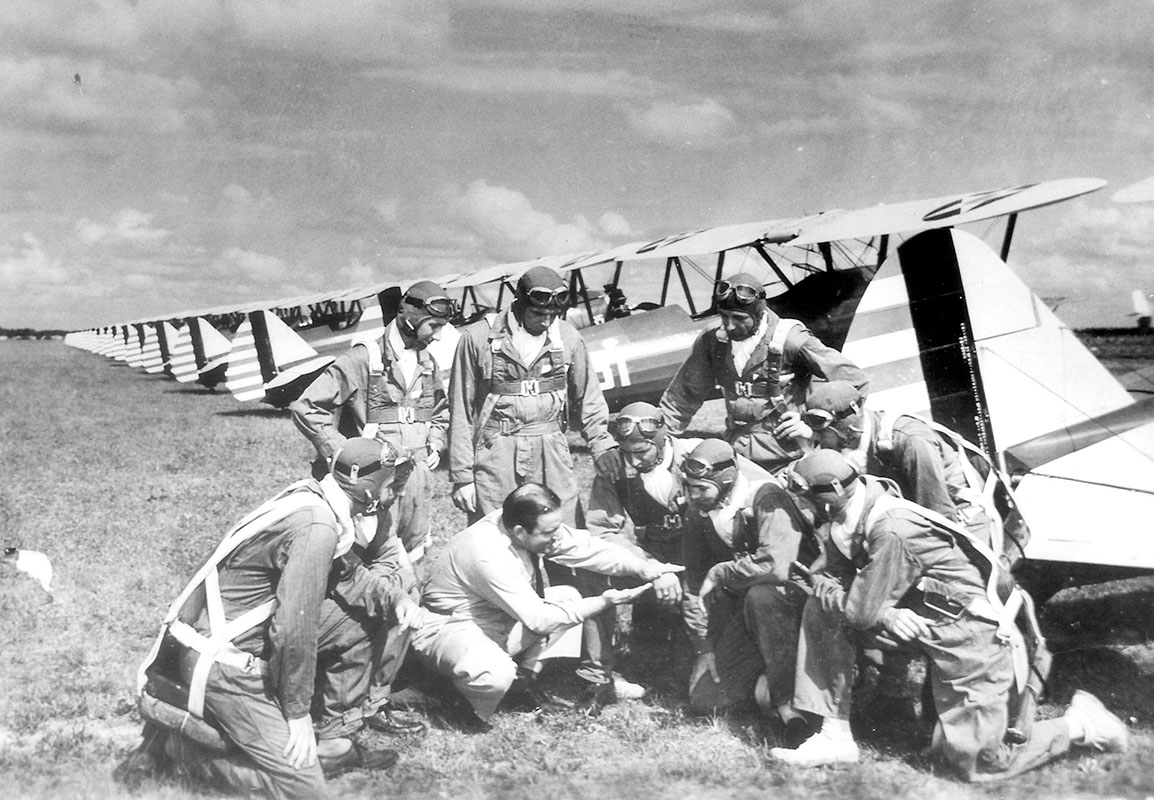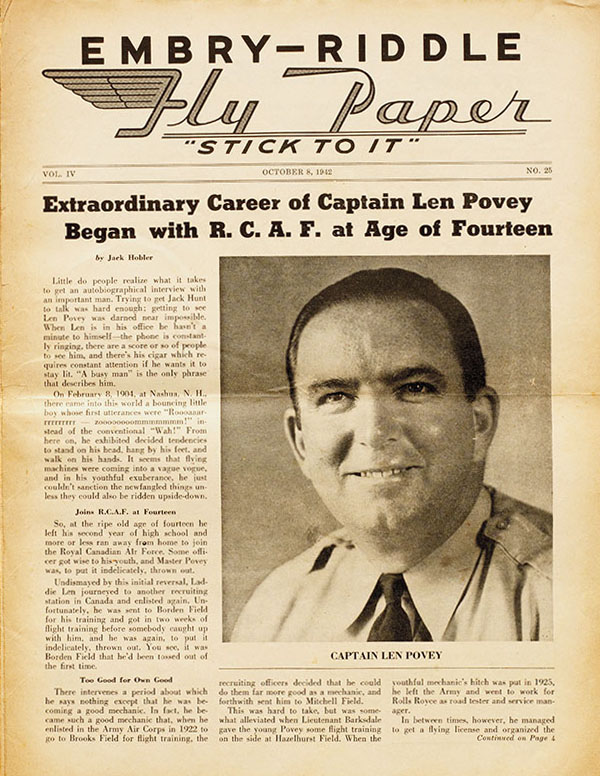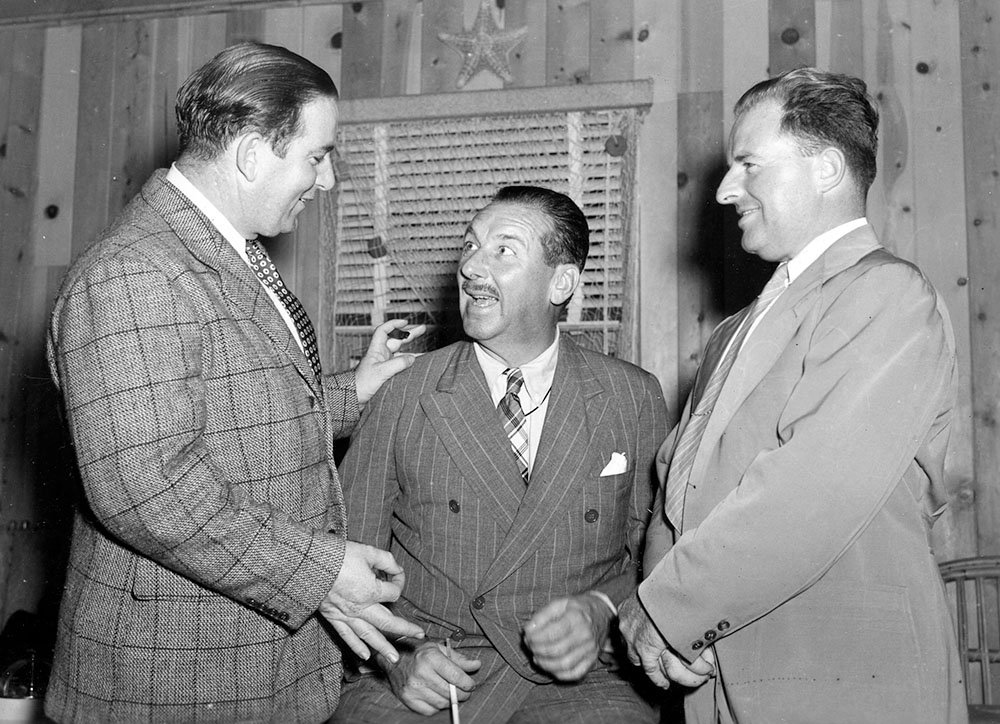
Floridians were focused on fun over Labor Day weekend in 1935. They had no idea a Category 5 hurricane was about to hit the Florida Keys. Their only warning came, in the eleventh hour, thanks to an American aviator living in Cuba.
The aviator who confirmed the monster storm’s path was himself larger than life — arguably larger than fiction. Leonard J. Povey was a legendary air circus performer, occasional bootlegger, aerobatic innovator, honorary captain in the Cuban air force, and later, an Embry-Riddle executive over four contract-flying schools established before America entered World War II.
He was also the first hurricane hunter.
Povey was based in Havana, establishing ground and flight training for the Cuban Air Force and serving as the personal pilot for President Fulgencio Batista. He landed the job in 1934 when a Cuban official watched him stunt flying over Biscayne Bay.

At the beginning of September in 1935, the Cuban weather service detected a storm intensifying 145 miles east of Havana. On Sept. 3, a Pan Am flying boat pilot making a Key West to Havana run alerted the Cuban National Observatory of heavy weather to the east. Povey volunteered to help pinpoint the location and movement of the storm.
He flew his Curtis Hawk II over the Straits of Florida, where he located “an inverted funnel cloud” farther north than predicted and moving northwestward. He circled it to get a better idea of its motion, but in his open cockpit biplane, he did not dare fly into the eye of the storm. He later told reporters, “I was able to fly close to the disturbance. It appeared to be a cone-shaped body of clouds, inverted, rising to an altitude of 12,000 feet. The waves in the sea below broke against each other as if they were striking a sea wall.” (St. Louis Post-Dispatch, 23 September 1935).
The observatory dispatched a warning to the Keys, but the news came too late for an effective evacuation. Though small, the hurricane lasted 13 days, making landfall twice in Florida. Winds of 200 mph and a 20-foot storm surge destroyed the Overseas Railroad, flattened Islamorada and flooded the Florida Panhandle. Estimates put the death toll between 400 and 600.
Povey became an advocate for aerial hurricane patrols. However, the type of recon mission he envisioned did not happen until July 1943, when Colonel Joe Duckworth flew an AT-6 from their base in Texas into the eye of a hurricane churning toward Galveston.
Today, five Embry-Riddle alumni are official hurricane hunters, serving with the Air Force Reserve’s 53rd Weather Reconnaissance Squadron.
Bragging Rights to Fill Several Lifetimes
In a haze of cigar smoke, between swigs of bourbon, Leonard Povey recounted his aerial adventures to young fliers at Carlstrom Field in Florida. Even on the ground, he commanded a rapt audience. His pilots-in-training knew he could fly anything with wings and an engine — upside down and sideways.

John Paul Riddle valued Povey as an administrator, but more crucially, as a talent scout. He had worked for the government re-rating instructors, which made him the perfect choice to recruit the most highly skilled pilots. Povey personally selected many of the instructors who would train more than 19,000 pilots for World War II.
Povey was a self-taught pilot who tried to join the Canadian Air Force at 14. In 1922, he reported to Mitchell Field to learn to fly (officially) and train as a mechanic. By 1925, he left the service to test Rolls Royce automobiles and Granville Gee-Bee race planes. He began barnstorming over the Great Lakes in a Curtis Flying Boat and earned the nickname “Upside Down Povey” as a headliner with the Brinton-Bayles Flying Circus. (He also did a bit of bootlegging, running whiskey from Canada to New York.)
Even on the ground, Povey commanded a rapt audience. His students knew he could fly anything with wings.
Flying for Cuba from 1934 to 1938, he earned 17 exhibition trophies in his silver and yellow Curtis Hawk P-6S. During a 1936 competition, he attempted a double snap roll on top of a loop, but he was flying too fast. He turned his biplane on her side and performed a half roll at each end of the loop. When Judge Jimmy Doolittle asked him what he called his “freestyle” move, he improvised again, answering, “It’s a Cuban 8.”
After World War II, Povey left Embry-Riddle for Fairchild Aircraft Division, where he developed training aircraft and demonstrated the C-119 military transport. He went on to work for Mackey Airlines (which became Eastern) and a fixed-base operator in South Carolina.
Povey died in 1984. At 80, he had survived a mid-air collision, an encounter with a turkey buzzard that sheared off his left aileron, a near-fatal car accident and a flight so close to a Cat 5 storm that a later pilot likened the experience to being “swallowed by a whale with epilepsy.”
He had lived up to his lifelong credo: “The Lord hates a coward.”